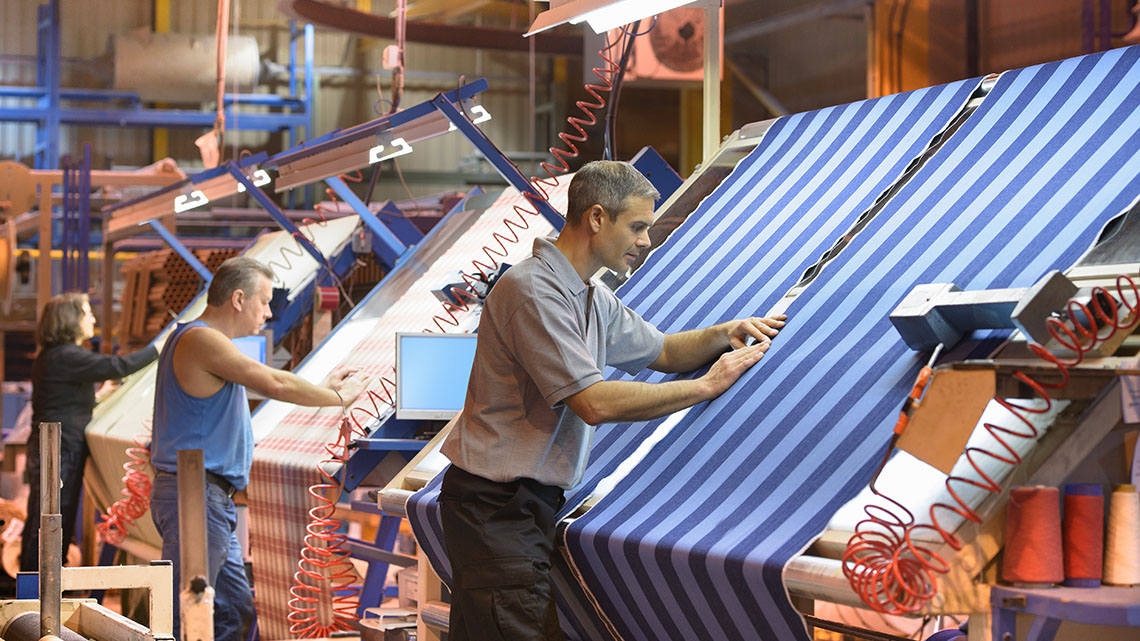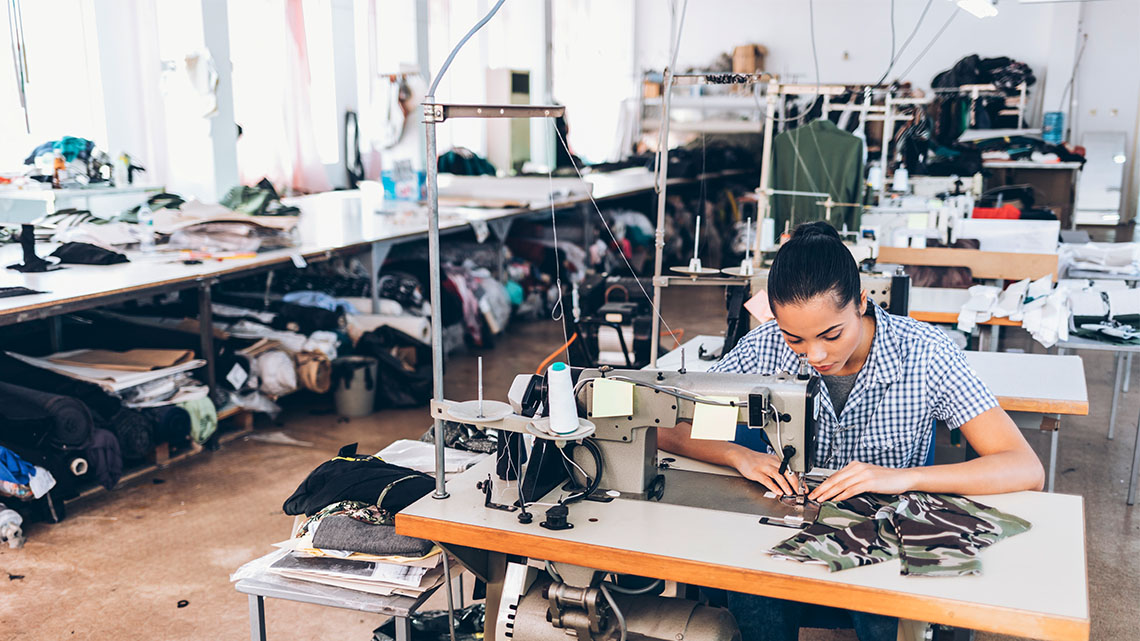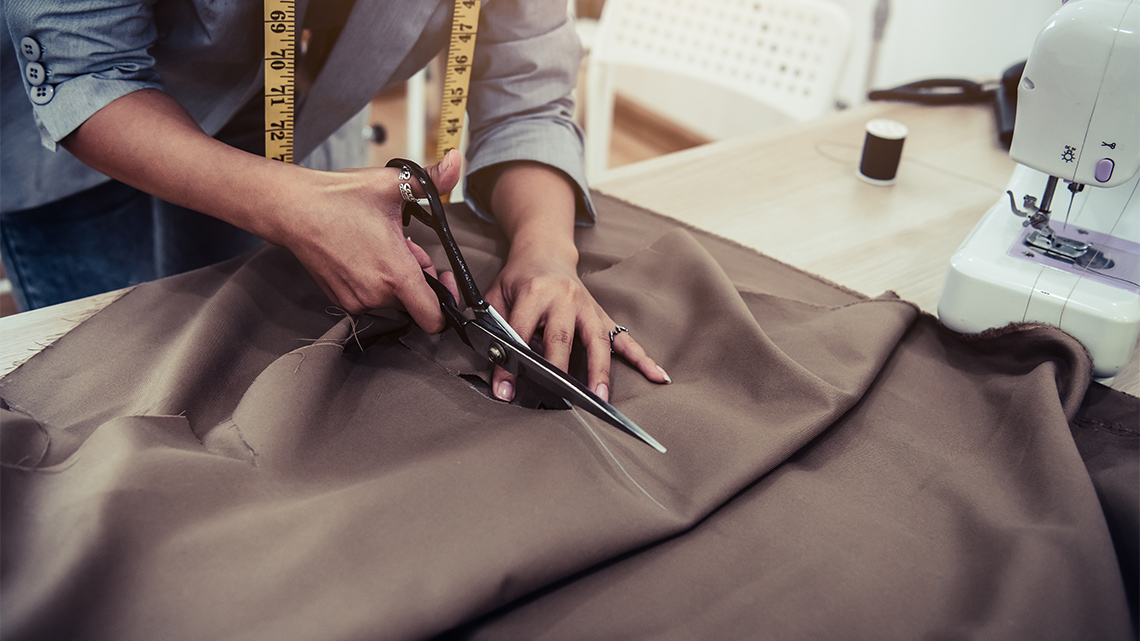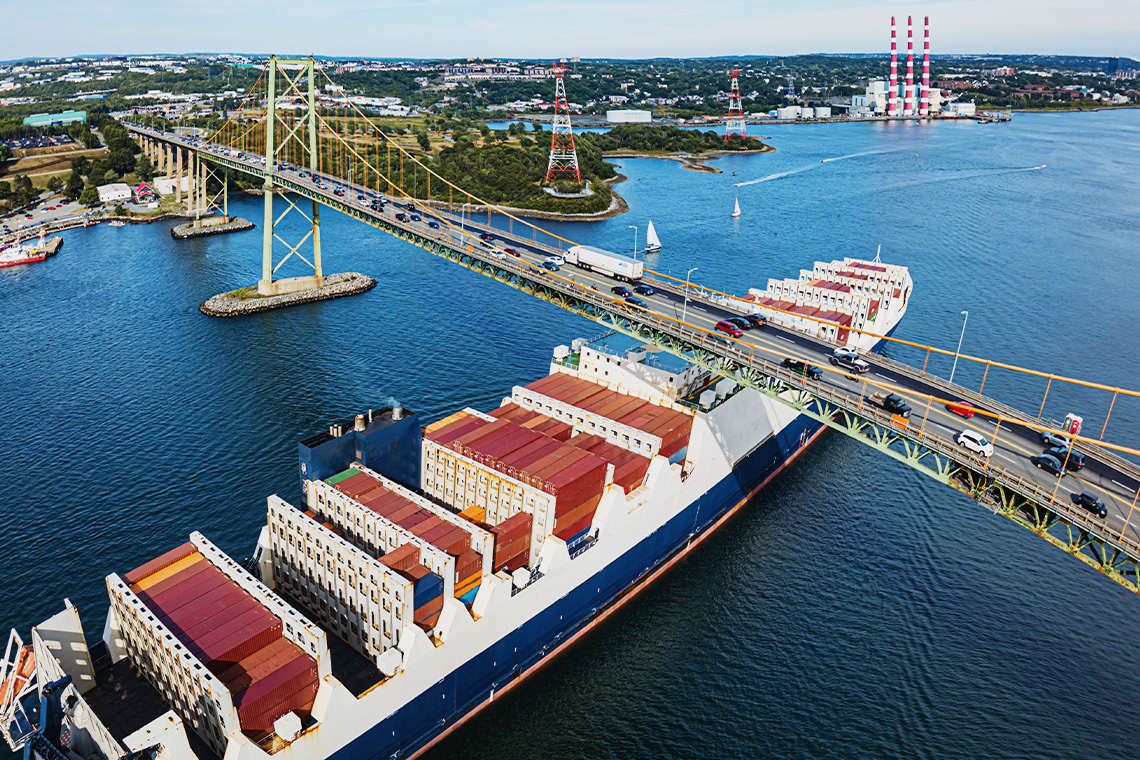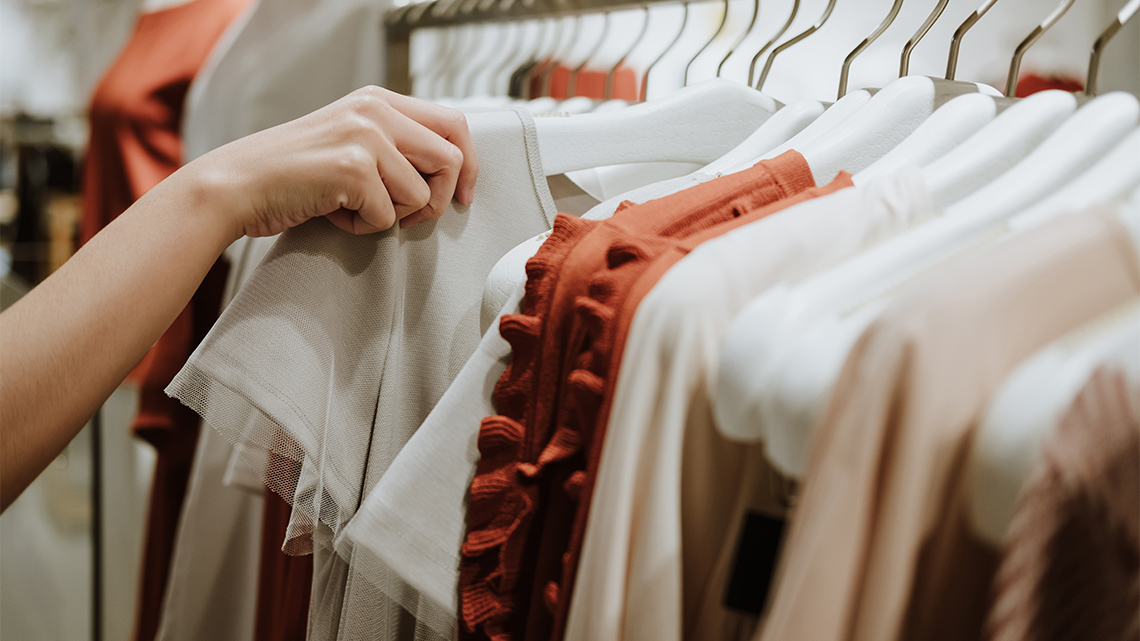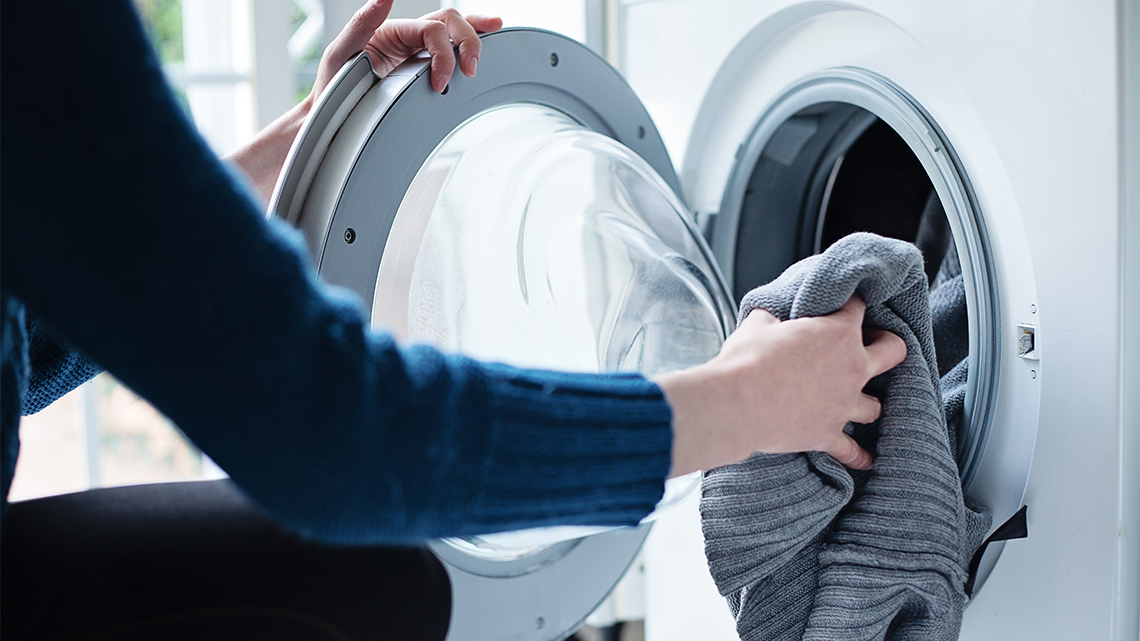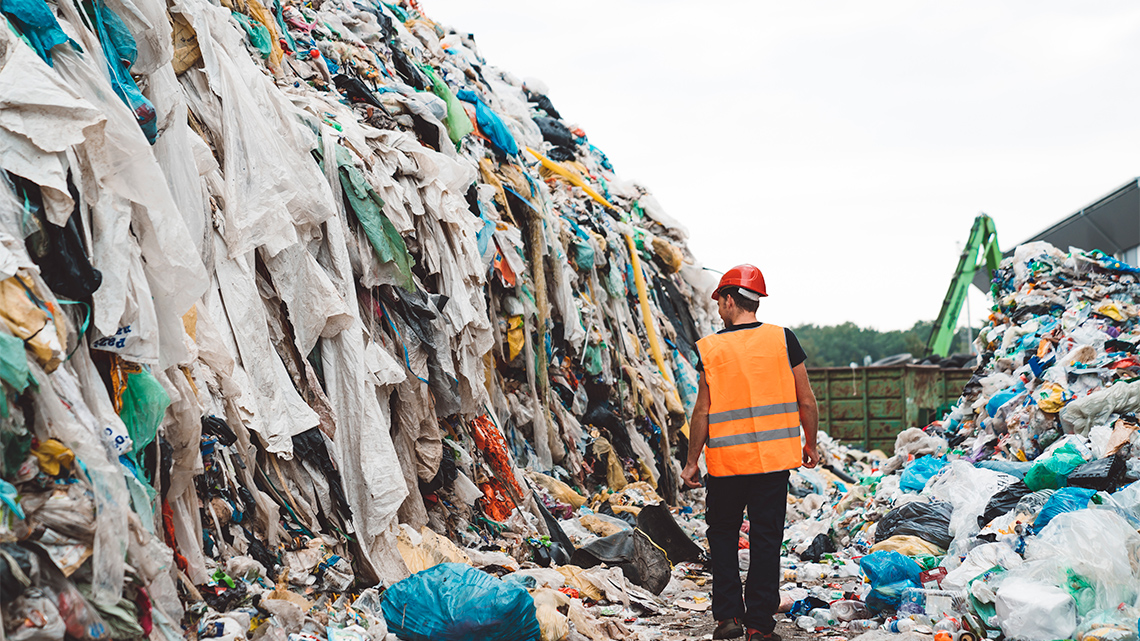Minds On
Clothing
There is a process to design and manufacture clothing. Sometimes the manufacturing process happens on a large scale for global use, and other times on a small scale for local use.
Explore the following images and descriptions. What do you notice?
How might this process be similar and/or different for a local producer?
Before the clothing design and manufacturing process can begin, what are some of the raw materials someone in the industry would need?
Action
How is clothing made?
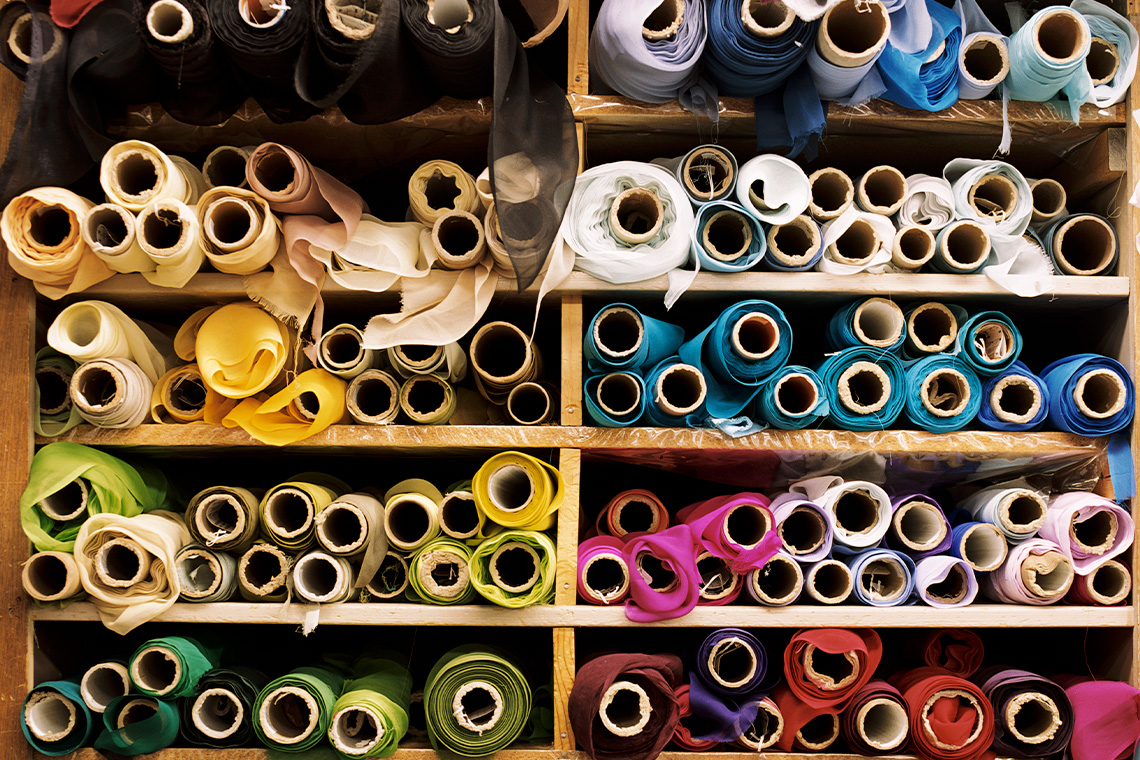
In order to create clothing, we would need to understand first how fabric is produced.
Press the following tabs to access steps to producing fabric.
The first step is to gather raw materials that are either natural or synthetic. Natural materials come from plants and animals, like cotton. Synthetic materials are made from products of gas or oil, like polyester.
The raw material goes through a process where it is cleaned and prepared. Then, it is twisted or spun to make yarn and thread.
Next, one can weave the thread to make different kinds of fabric.
Next, bleach and/or dye can be applied to the fabric to create different colours and patterns. Some fabrics also go through waterproofing.
Fabric is cleaned and dried in preparation for the manufacturer.
After the steps have been completed, the fabric is ready, and the manufacturer begins their process.
What do you notice about the following manufacturing steps?

Performing research on the product to create, Designing the product to manufacture, Developing the first model to manufacture, Manufacturing the product, Distributing the product to businesses and people
Let’s explore the manufacturing steps with examples from the clothing industry.
Pause and Reflect
Pause and reflect
Many processes in the clothing industry impact the environment in various ways.
Based on what we’ve explored so far, how do you think the clothing industry impacts the environment?
Record your ideas in a notebook or another method of your choice.
If possible, share your ideas with a partner.
Environmental impacts
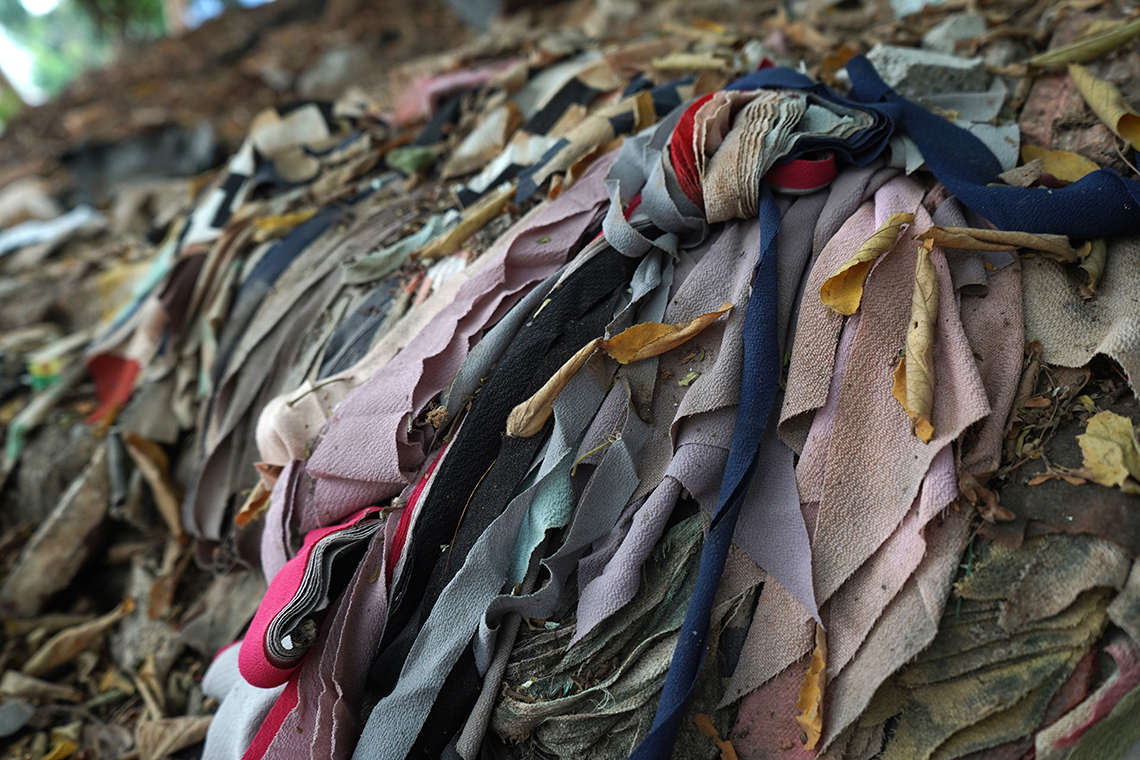
Press the following tabs to access how the clothing industry impacts the environment.
The clothing industry is a major contributor to water consumption and pollution.
Huge quantities of fresh water are used for the dyeing and finish process. Also, many garments are made entirely or partially out of cotton, which requires a lot of water to grow, adding to overconsumption of water. Sometimes clothing is made from synthetic materials because this material is less expensive.

Therefore, the clothes can be sold at a less expensive price, however, the synthetic materials contain chemicals. These chemicals end up in the water, and the untreated, toxic wastewater is dumped directly into rivers, adding pollution to our marine life.
So, what can we and the clothing industry do to reduce our pollution?
Record your ideas in a notebook or another method of your choice.
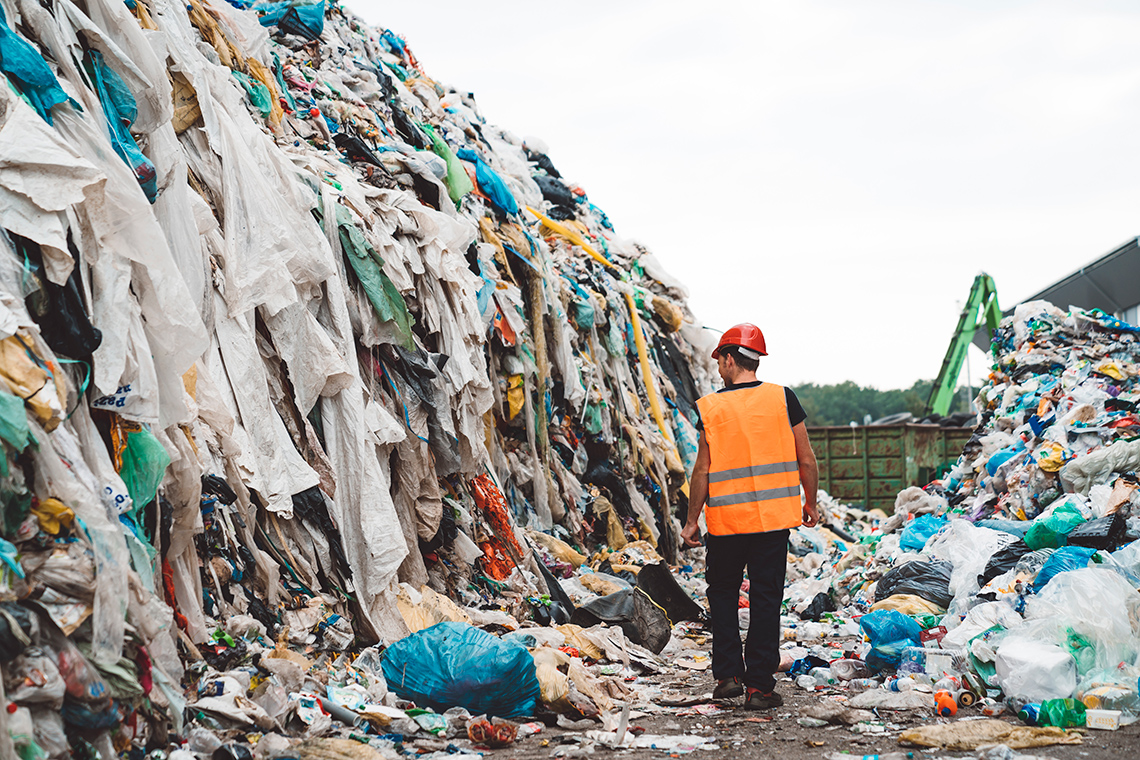
There is more and more clothing waste in landfills each year. Many fabrics are not biodegradable and can take up 200 years to decompose.
What can we do to prevent clothing from going to the landfill?
Record your ideas in a notebook or another method of your choice.
The clothing industry accounts for approximately 10% of the worlds greenhouse gas emissions, contributing to global warming. The non-renewable energy that is used when manufacturing, producing, and transporting clothing creates greenhouse gas emissions.
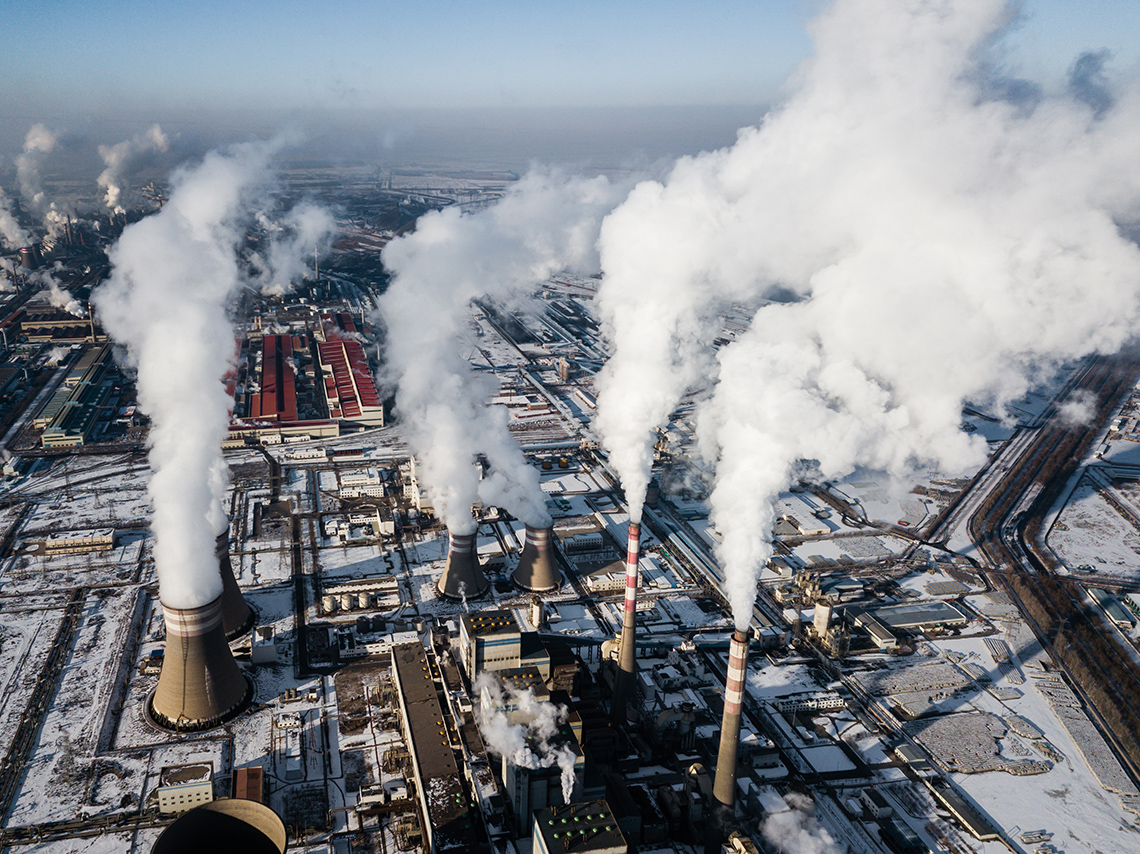
Synthetic fibres that are in majority of our fabrics are made from fossil fuels or produced in factories powered by coal.
What can we or the clothing industry do to reduce our greenhouse gas emissions?
Record your ideas in a notebook or another method of your choice.
Soil degradation is when the quality of soil declines and diminishes so much, it can no longer support its ecosystem, or the plants and animals within it.
What can producers of clothing do to reduce deforestation?
Record your ideas in a notebook or another method of your choice.
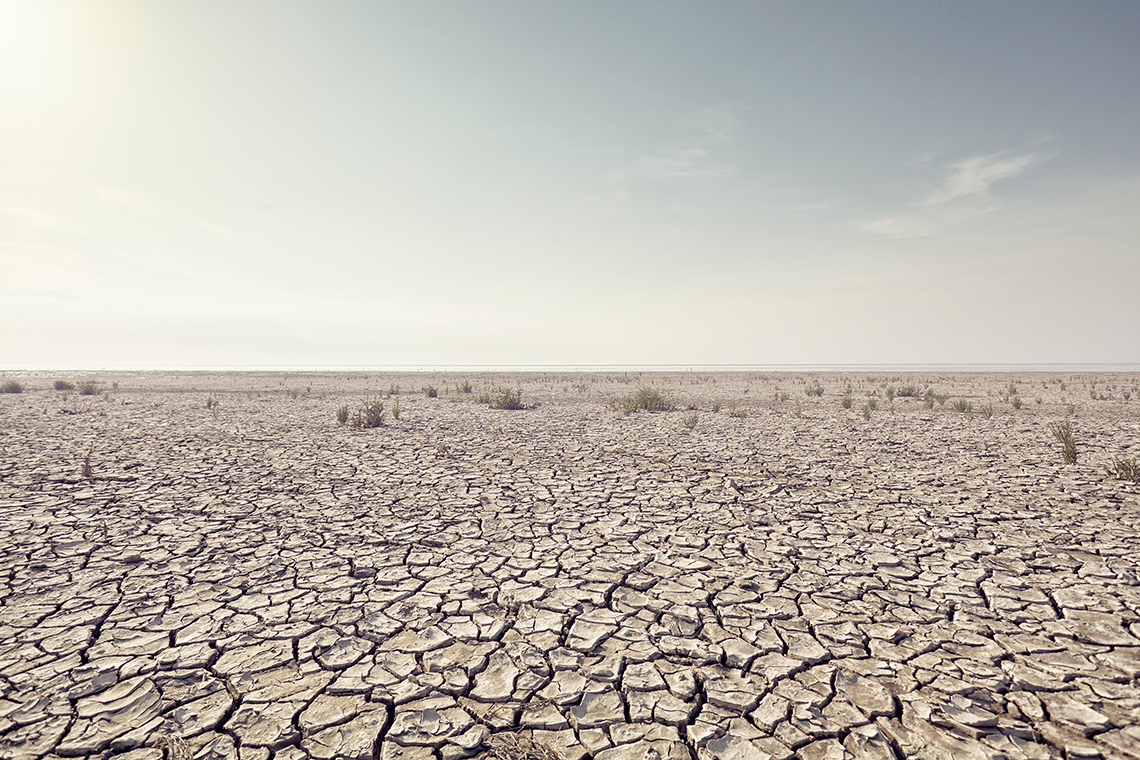
Massive use of chemicals and fertilizers to grow materials such as cotton cause mass soil degradation. Other fabrics, such as a rayon, is a wood-based fabric that has caused deforestation, a decrease in forest areas.
Press “Possible Response” to access different actions someone might take to reduce pollution caused by the clothing industry.
For reducing our water pollution, some actions might include:
- choosing organic and natural fabrics that don’t require chemicals to be produced
- selecting different manufacturing and production processes
- selecting fabrics such as linens or recycled materials that do not require water to be produced
For reducing our waste, some actions might include:
- purchasing less, if possible
- choosing clothing made from durable fibers to increase its longevity
- recycling, donating old clothing when possible
- reusing clothing to create new articles, or use unused fabric towards another craft or project
For reducing our greenhouse gas emissions, some actions may include:
- choosing natural and durable fibers
- purchasing less
- repairing clothing when possible
For reducing deforestation, some actions might include:
- choosing environmentally friendly fabrics
- manufacturing clothing locally
Sustainable clothing
Sustainable fashion is a fashion that is mindful of its social, environmental, and economic factors. Companies that product sustainable fashion are mindful of what materials they use, where their materials come from, and they monitor the environmental impact of the clothing they are creating.
Access this video entitled “Field to Fashion” to learn more about sustainable fashion. While exploring the video, be sure to note examples of sustainable fashion.
In Ontario, designers and producers of apparel want to offer a long lasting solution to promote sustainability in the clothing industry.
- What did you notice about each person that was interviewed?
- What examples of sustainable fashion did you notice?
Record your ideas in a notebook or another method of your choice.
Connections
Initiatives
As you access the following sustainable fashion designers, explore the actions they are taking to reduce the negative impact of clothing manufacturing on the consumers and on the environment.
Press the following tabs to explore sustainable fashion designers.
Kristi Soomer is the CEO and founder of “Encircled,” which is a clothing producer in Toronto, Ontario, where all of her products are made.

Her focus is making clothes sustainably and providing a work environment that is equitable and safe to all employees. All of the clothing is made in-house, where they run small batches, so that they don’t end up overproducing clothing, which is another way we can reduce the negative environmental impacts of the clothing industry.
Riley Kucheran is an Indigenous designer that set out on a mission to reconnect fashion with mindfulness. Riley is Ojibway from Biigtigong Nishnaabeg (Pic River First Nation in northern Ontario) and is a PhD student in the Communication and Culture program at Toronto Metropolitan University. In the classroom, Riley has been exploring Indigenous knowledge and its connection to fashion. His professor, Henry Navarro, emphasized that idea that “everything has a relationship to something else, and simply buying and wearing a garment because it’s on trend doesn’t work” (Singh, 2018). From an Indigenous perspective, the elements of clothing (colours, designs, shapes, and etc.) should all have a personal connection to you and your family.
This begins with materials. Navarro emphasized that, “You have to be not just mindful of, but grateful for those materials getting to you,” he adds. “The animal that lets you use their fur or their hide. The Earth, which produced plants that you can then transform into fibres. It means these garments are not simply garments; they have a spiritual aspect to them” (Singh, 2018).

Indigenous fashion is not a trend, but a set of values. Values such as up-cycling and using renewable and sustainable materials have been valued by Indigenous people for thousands of years.
What do you think?
How are the initiatives that we have explored promote sustainable fashion?
Record your ideas in a notebook or another method of your choice.
Consolidation
Learning check!
Let’s reflect on the information we previously explored on clothing.
Select the correct answer, then press ‘Check Answer’ to see how you did.
Future impacts
This learning activity connects new and existing approaches for young scientists to create positive changes in their communities.

How can I make a difference?
A new space has opened up and the community is asking for this to become a space to purchase clothing.
As a concerned community member, create a list of considerations you believe should be discussed before this space begins.
Be sure to consider the following:
Along with the suggested list, create a few recommendations for this space to help reduce the negative environmental impact of the clothing industry.
Record your list and your recommendations in a method of your choice.
Reflection
As you read the following descriptions, select the one that best describes your current understanding of the learning in this activity. Press the corresponding button once you have made your choice.
I feel…
Now, expand on your ideas by recording your thoughts using a voice recorder, speech-to-text, or writing tool.
When you review your notes on this learning activity later, reflect on whether you would select a different description based on your further review of the material in this learning activity.
Press ‘Discover More’ to extend your skills.
Discover MoreYou will now access the article “How Ontario Is Becoming A Hotspot For Ethical Apparel.”
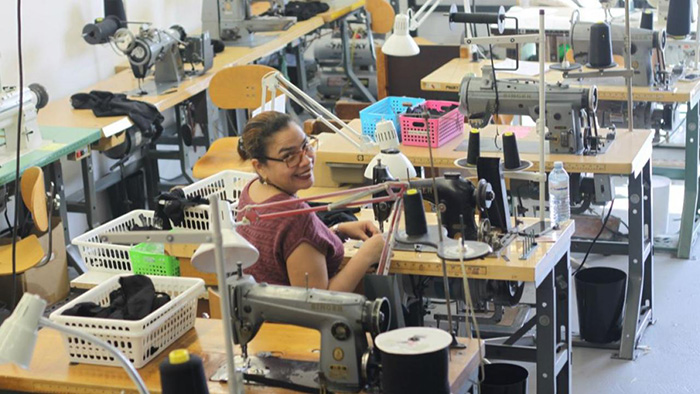
Press tvo today to access How Ontario Is Becoming A Hotspot For Ethical Apparel.
tvo today (Opens in a new tab)
